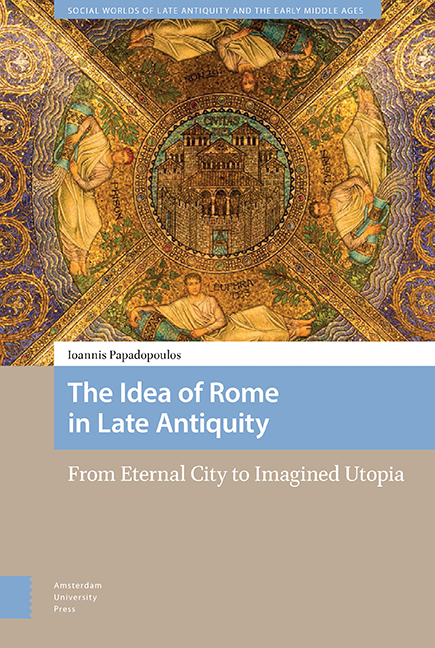Book contents
- Frontmatter
- Dedication
- Contents
- Introduction: Between a Physical and an Imaginary City
- I Looking Backwards: Ordo Renascendi
- II The Adventus of Constantius
- III Between Rome and Athens: The Artificial Romanitas of Julian
- IV Between the Altar and the Court: Symmachus and Claudian in Action
- V Between Christ and a Roman Place: The Emergence of Christian Rome in Time and Space
- VI Between Jerusalem and Babylon: The Archetype of Rome in the City of God
- Conclusions: From Rome to Eternity
- Bibliography
- Index
I - Looking Backwards: Ordo Renascendi
Published online by Cambridge University Press: 11 November 2021
- Frontmatter
- Dedication
- Contents
- Introduction: Between a Physical and an Imaginary City
- I Looking Backwards: Ordo Renascendi
- II The Adventus of Constantius
- III Between Rome and Athens: The Artificial Romanitas of Julian
- IV Between the Altar and the Court: Symmachus and Claudian in Action
- V Between Christ and a Roman Place: The Emergence of Christian Rome in Time and Space
- VI Between Jerusalem and Babylon: The Archetype of Rome in the City of God
- Conclusions: From Rome to Eternity
- Bibliography
- Index
Summary
It was 417 AD when a provincial aristocrat prepared to depart from his beloved Rome and make the journey to his ancestral land in Gaul. It seemed that his family property had been exposed to pillaging by newcomers, who had crossed the Rhine about a decade earlier in search of a new homeland. In his anxiety however, or perhaps in an attempt to comfort himself on his sorrowful journey, he looked backwards to see the city of Rome fading away on the horizon and reflected on what that city meant to him and his contemporaries. Perhaps, we might never know whether he arrived at his destination, all that we can be sure of to date are his thoughts and feelings about Rome. Following the same pattern, we will try to look back in time to trace the evolution of the idea of Rome in the six decades preceding that journey.
The first chapter of this book turns to Rutilius Claudius Namatianus, whose De Reditu Suo (417) leaves us with an impression of the eternal city recovering from the Gothic invaders, admitting with some relief that his world, Rome of the great aristocratic families and their patronage, had survived along with the ideals that the existence of this city signified. De Reditu Suo, however, is a contradictory report, dominated by the author’s sorrow about leaving his beloved Rome and his probable anxiety about the condition of his ancestral property in the Gallic countryside in the aftermath of the Gothic raiders on the one hand, and, on the other, the inner optimism and hope for the material and ideological recovery of the city as it was expressed through the restoration projects conducted by officials. The city was recovering with the help of its most eminent members, its aristocracy, which, as in the past, had contributed to Rome's preservation and glory.
During siege of 410, Rome's aristocracy was divided. Pompeianus, the urban prefect, suggested that the Senators could contribute from their wealth to the defence of the city. Many aristocrats, such as Christians Melania and Pinianus, had already chosen to flee. The city's bishop, Innocent I, was also absent. He managed to escape to the safety of the imperial court at Ravenna.
- Type
- Chapter
- Information
- The Idea of Rome in Late AntiquityFrom Eternal City to Imagined Utopia, pp. 57 - 66Publisher: Amsterdam University PressPrint publication year: 2021



